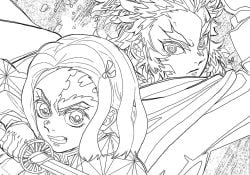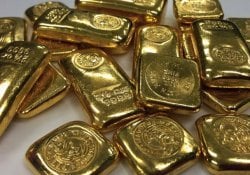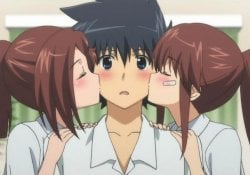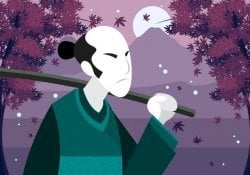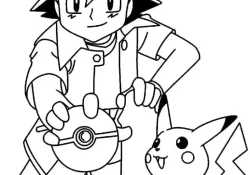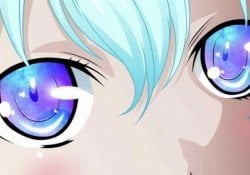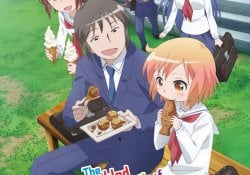Did you know that in Japan there are 3 holidays to celebrate Children's Day? Each with a specific goal? In this article, we are going to talk about the Kodomo no Hi, Shichigosan [753] and Hina Matsuri dates, we will venture into each of them.
Have you ever wondered what Children's Day is in Japan? There are several festivities and dates involving children, a special date for boys and one for girls. How are these dates celebrated?
Kodomo no Hi - Children's Day - May 5
Children's Day literally means children's days, and this date happens on May 5th in Golden Week. On this day streamers of carp called koinobori, are hung in gardens to symbolize strength and determination.
Families also display samurai figures, armor, helmets and other samurai weapons to represent the heroes. Kintaro. In addition, other symbols such as Shoki, Momotaro and Shobu are used.
According to Article 2 of the Holiday Law, the aim is to “respect the personality of children, make children happy and thank the mother”. That day was established by the Holidays Act on July 20, 1948.
also known as Tango no Sekku [端午の節句]. On this day the children eat chimaki, which are rice balls wrapped in bamboo leaves and kashiwa mochi. On that day, the song of the carp called Koinobori uta.
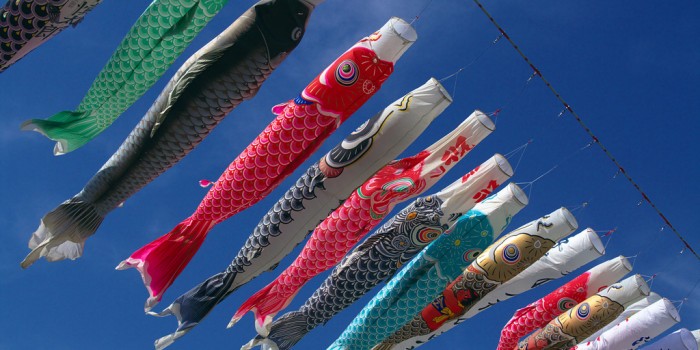
Song of Carp - Koinobori UTA
Koinobori is higher than the roof.
Okii magoi otoosan wa.
Chisai higoi wa kodomotachi.
Omoshiro soni oyideru.
irakanano namito kumono nami
kasanarunamino nakazorawo
tachibanakaoru asakazeni
takaku oyoguya koinobori
hirakeruhiroki sonokuchini
funewo monoman samamiete
yutakani furuu obireniwa
I don't understand that text.
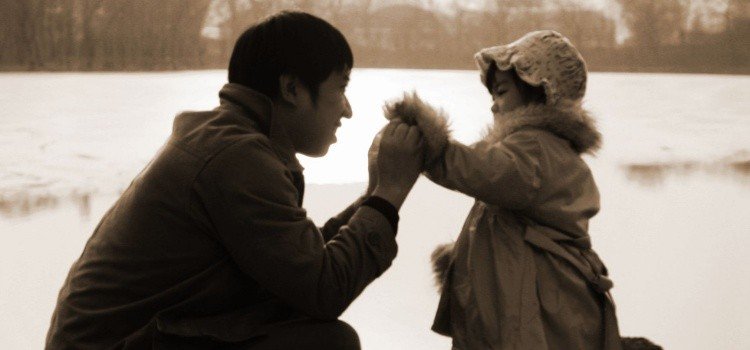
Girls Day - Hina -Matsuri
Girls' Day takes place on March 3 and is called Hina Matsuri [雛祭り] or Hina no sekku. The day is remembered for peach blossoms that symbolize a happy marriage and honor the girls. This date emphasizes the bonds of marriage to prosperity, happiness, luck and health for girls.
Hina Matsuri is traditionally marked by an exhibition of dolls, passed down from mother to daughter for generations. The dolls are laid out on an altar every year.
It usually consists of 15 dolls wearing imperial court attire in the Heian period (794-1192). According to Japanese belief, dolls have the gift of warding off evil spirits, diseases, bad luck and everything bad.
On girls' day it is common to drink Shirozake which is similar to Amazake, a drink made from rice fermented without alcohol content. The traditional food is Hina Arare, a rice and soy biscuit covered in colored sugar.
Other typical foods are Hishimochi and Sakuramochi (mochi rice cake), Chirashizushi (rice topped with colorful vegetables and fruits), and a clam soup called Hamaguri Ushio-jiru.
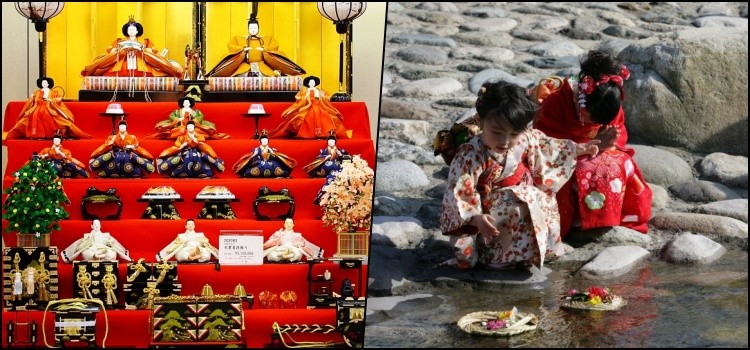
The girls' or dolls' festival also has its own traditional song called Ureshii Hina Matsuri. See below:
Ureshii Hina Matsuri - Letter
Akari wo tsukemashou bonborini
Ohanawo aguemashou momo no hana
Go'nin bayashi no fue taiko
Kyou wa tanoshii Hinamatsuri
Odairisama to Ohinasama
Futari narande sumashigao
To my new sister-in-law
A face as pale as snow
Kin no Byoubuni utsuru hi wo
The spring wind that carries the scent of the past.
I want you to act as a translator from pt to en. I will speak to you in pt you will translate in en. The entries I am going to send may have texts in other languages or untransducible, return words it unmodified. Only include the translation and nothing else, do not write explanations here. If an input cannot be translated, return it unmodified.
Akai okaono udaijin
Kimono wo kikaete obi shimete
Kyou wa watashi mo haresugata
This good day of early spring
Hinamatsuri is happier than anything
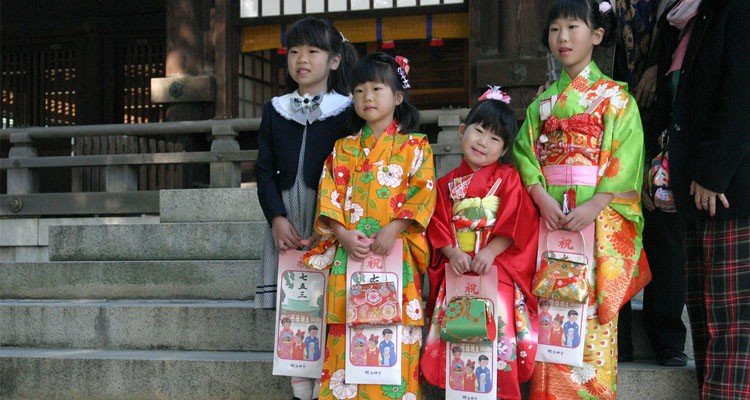
SHICHI-GO-SAN [753]-Children's Festival
The Shichi-go-san [七五三] is a festival that takes place every November 15th in Japan. Its name is literally written with the Kanji of the numbers seven, five and three, as parents take their three and seven year old daughters and their three and five year old sons to the shrines to ask for health, for a good growth and for the happiness of all the children there.
A second reason for going to the shrine would be to get rid of evil spirits, although this practice is already common outside Shichi-go-san. As the festival day is not considered a holiday, if it falls on a working day, it is celebrated on the nearest weekend.
At this festival, children are usually dressed in kimonos or western formal attire, many for the first time in their lives, and are given amulets and their chitose ame (千歳飴), known as the “thousand-year bullet”.
Chitose ame is a long, thin, red and white candy that comes wrapped in edible rice paper, also very thin to the point of looking plastic.
It is associated with longevity and comes in a bag adorned with a heron and a turtle (symbols of longevity in Japan). There is a common belief that this candy bestows a thousand years of happiness on the children who receive it.
The reason why the ages of the children participating in the festival are seven, five and three years old is two. First, East-Eastern numerology adopts odd numbers as lucky numbers. The second reason would be the fact that these three ages are the most striking in a person's childhood.
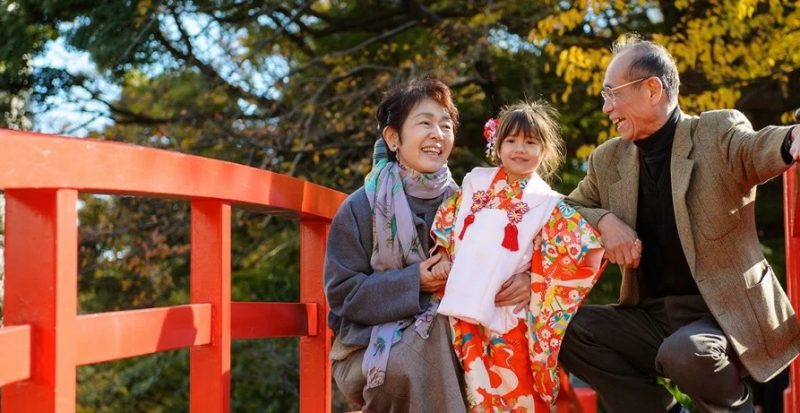
The story of Shichi-go-san
The festival was established in the Heian period (794 to 1185), when nobles celebrated the growth of their children on what was considered a lucky day in November. It was in the Kamakura period (1185 to 1333) that November 15th was officially adopted as Shichi-go-san day.
From the Edo period (1603 to 1868), it became a popular Japanese festival. An addendum would be that, in the Meiji period (1968 to 1912), the tradition would have presented some other changes.
Previously, the festival was treated in a more serious way, so it had peculiarities in relation to what we observe today. When the festival passed through the time of the samurai, the belief was that children up to three years old had to have their hair shaved and that only after the festival could they grow it out for the first time.
At the age of three, the girls were dressed in their first kimono, normally flowered, and at the age of seven they would wear the obi over them for the first time. Boys would wear their first hakama at the age of five.
As stated earlier, in the Meiji era the Japanese became more lenient about Shichi-go-san traditions and even three year olds dressed in full traditional clothing. It was also when the practice of shaving children's hair ended up being abandoned.
Despite all the beauty behind all Japanese festivals, the reason why Shichi-go-san came about is somewhat melancholy. In the old days, the infant mortality rate was high in Japan, and the festival was the nobles' attempt to find an answer within a shared belief.
Currently, Japan is no longer haunted by such a problem, however, since then, the festival tradition has remained. Let's leave a video showing a little about this day:
The article is still halfway through, but we recommend also reading:
Sekai Kodomo in Hi - World Children's Day
The UN established in 1954 the International Children's Day for 20 November, but allowed each country to set its own date. Japan chose May 5th, but it's good to remember the universal date of Children's Day.
I hope you enjoyed the article, if you liked it share and leave your comments.

